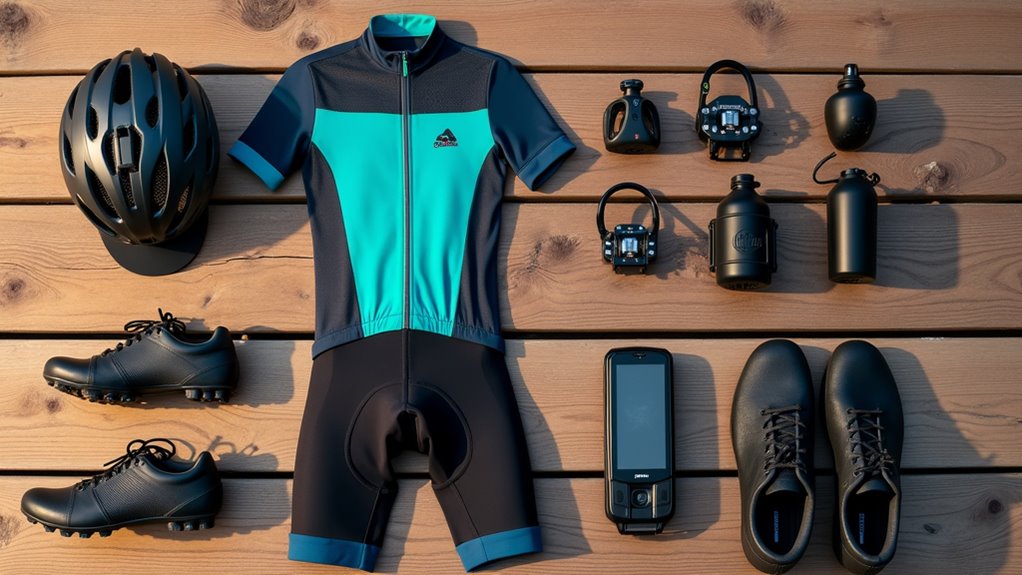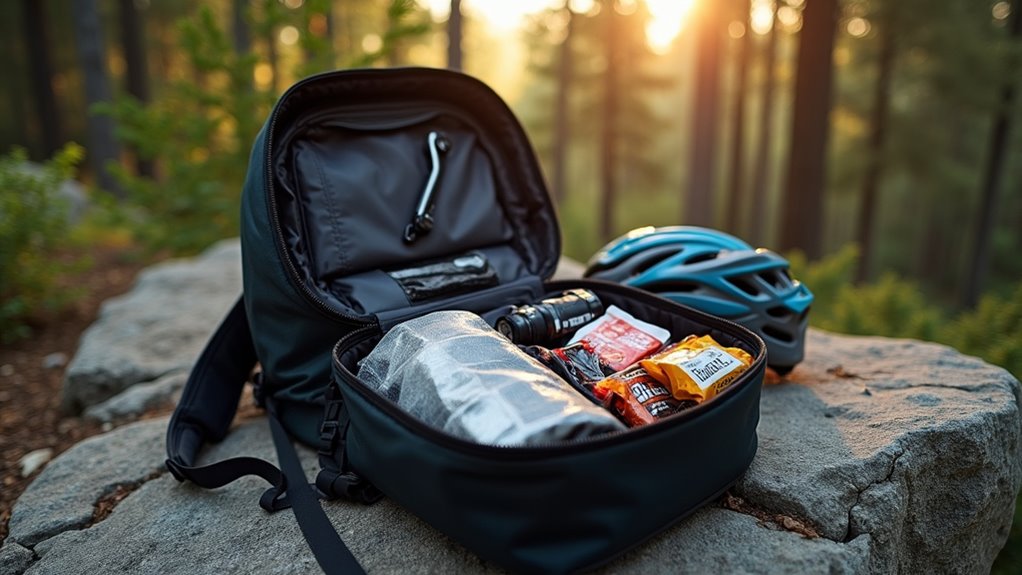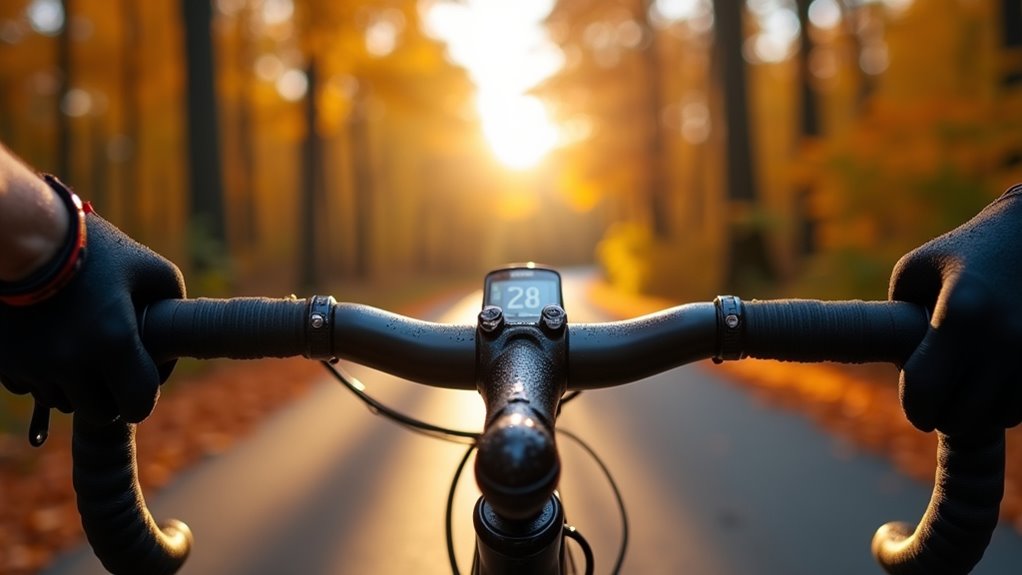Physical Address
304 North Cardinal St.
Dorchester Center, MA 02124
Physical Address
304 North Cardinal St.
Dorchester Center, MA 02124

Optimize your biking adventure with insider secrets that transform ordinary rides into extraordinary experiences—discover what most cyclists never learn.
Picture yourself pedaling down a winding trail, wind rushing past your face as you discover breathtaking views around every bend. You don’t need expensive gear or exotic destinations to create unforgettable biking memories. The difference between a mediocre ride and an incredible adventure often comes down to smart preparation and knowing a few insider tricks. Whether you’re planning a quick afternoon escape or a multi-day journey, these practical strategies will transform your next outing into something truly special.

Your biking adventure’s success hinges on selecting gear that matches your route and budget. Start with a reliable helmet—it’s non-negotiable for safety. Choose clothing that wicks moisture and layers easily since weather changes quickly outdoors.
Don’t overspend on fancy gear initially. Focus on essentials: a basic repair kit with tire levers, patches, and a portable pump. Pack lightweight snacks, water bottles, and a first-aid kit. Your bike doesn’t need expensive upgrades—ensure it’s properly tuned with working brakes and smooth-shifting gears.
Consider renting specialized equipment for longer trips rather than buying everything upfront. A comfortable saddle and padded shorts prevent discomfort on extended rides.
Research your route beforehand to determine if you’ll need additional lighting, maps, or weather protection. If you’re planning to combine your biking adventure with overnight stays, consider incorporating camping activities that you and your partner can enjoy together at your destination.
Before you clip into your pedals, thorough route planning prevents costly mistakes and dangerous surprises. Start with free resources like trail apps, local cycling forums, and park websites to check current conditions. Look for recent weather damage, construction closures, or seasonal restrictions that could derail your plans.
Map out water sources, rest stops, and emergency exits before you ride. Don’t rely solely on GPS—download offline maps and carry a backup paper map. Check elevation profiles to gauge difficulty and plan your energy accordingly.
Contact local bike shops or ranger stations for insider knowledge about trail conditions. They’ll warn you about washouts, fallen trees, or wildlife activity. This five-minute phone call can save hours of backtracking and frustration on the trail.
For those seeking more extreme terrain challenges, consider researching glacier climbing trails that might intersect with mountain biking routes in alpine regions.

While proper route planning sets the foundation for success, smart packing guarantees you’ll handle whatever the trail throws your way. Start with safety essentials: helmet, first aid kit, and a whistle. Pack a multi-tool, tire repair kit, and spare tube – trail-side breakdowns won’t derail your adventure. Don’t forget your phone in a waterproof case and a portable charger.
Hydration’s vital, so bring more water than you think you’ll need. Energy bars and trail mix keep your fuel tank full without breaking the bank. For longer rides, consider packing deli meat sandwiches as they’re quick to prepare and provide satisfying protein. A lightweight rain jacket protects against sudden weather changes. Pack everything in a compact backpack or bike panniers, keeping weight distribution balanced. Remember, you’ll carry what you pack, so choose wisely and prioritize multipurpose items.
Although you’ve packed your gear perfectly, your body and mind need preparation too. Don’t underestimate how physical and mental readiness affects your biking experience.
Start conditioning yourself weeks before your trip. You don’t need expensive gym memberships—simple activities work wonders:
Begin your biking preparation weeks ahead using simple, accessible activities rather than costly gym memberships for effective conditioning.
Mental preparation matters just as much as physical fitness. Research your route, check weather forecasts, and set realistic expectations.
Accept that you’ll face obstacles—that’s part of the adventure. When you’re physically ready and mentally prepared, you’ll enjoy every mile. Just like deciding whether to rent or buy equipment for outdoor activities, preparation requires weighing your options and making informed choices.

Once you’re on the trail, you’ll discover that the real magic happens when you stay present and engaged with your surroundings. Put your phone away and focus on the scenery, sounds, and smells around you.
Take regular breaks to hydrate, snack, and stretch – your body will thank you later.
Pace yourself according to your fitness level, not your ego. There’s no shame in walking uphill sections or stopping when you need rest.
Document your journey with quick photos at scenic spots, but don’t spend the entire ride behind a camera.
Stay flexible with your route if weather changes or you’re feeling fatigued. Listen to your body’s signals and adjust accordingly.
Consider securing travel insurance before embarking on longer biking adventures to protect yourself against unexpected incidents or emergencies.
You’ve got your roadmap to biking bliss—now it’s time to ride into your own personal Tour de France. Don’t let your wallet feel like it’s been through a mountain stage; smart planning beats expensive gear every time. Remember, you’re not chasing yellow jerseys here, just chasing joy. Pack light, ride smart, and let the trail be your guide. Your two-wheeled adventure awaits—so clip in and make every pedal stroke count.